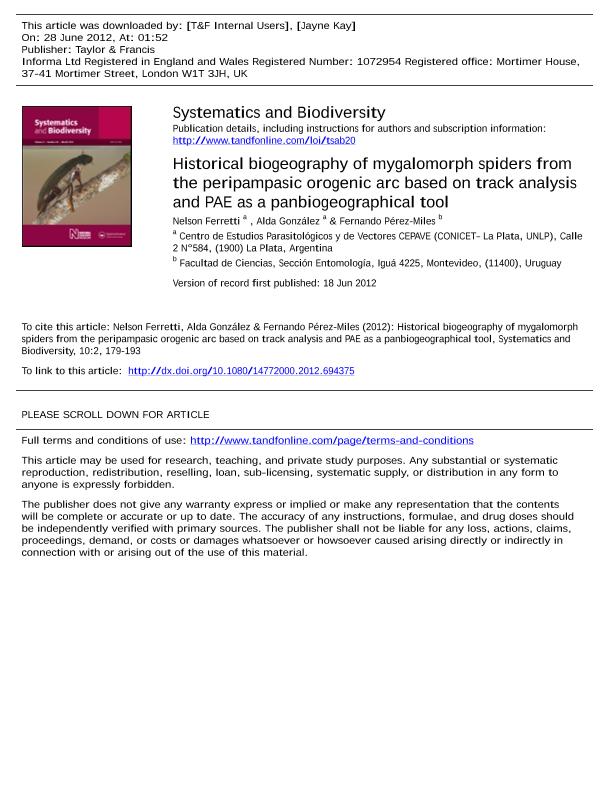Artículo
Historical biogeography of mygalomorph spiders from the peripampasic orogenic arc based on track analysis and PAE as a panbiogeographical tool
Fecha de publicación:
06/2012
Editorial:
Cambridge University Press
Revista:
Systematics And Biodiversity
ISSN:
1477-2000
Idioma:
Inglés
Tipo de recurso:
Artículo publicado
Clasificación temática:
Resumen
A panbiogeographical analysis of Mygalomorphae spiders was undertaken in order to determine generalized tracks and biogeographical nodes in the peripampasic orogenic arc. This arc comprises mountainous systems that harbour a high number of endemic species, while they exhibit biotic connections that have become fragmented probably during Tertiary tectonics. They are considered relevant areas for biodiversity conservation. A total of 1078 records of 51 Mygalomorphae species were analysed and ten areas were delimited based on geological data. We used track analysis and parsimony analysis of endemicity as a panbiogeographical tool. Five generalized tracks and three nodes were recovered. The tracks recovered in Argentina could be explained as a consequence of two events: (i) Atlantic marine transgressions during the Middle and Late Miocene; and (ii) changes in the climate of southern South America from the Miocene to Pliocene, caused by the gradual raising of the Andean chain and also, the additional uplift of Pampean and Subandean ranges. The southeastern Brazil and Uruguayan generalized tracks could be explained by the Rio de La Plata Craton.
Palabras clave:
Generalized Tracks
,
Mygalomorphae
,
Nodes
,
Panbiogeography
,
South America
Archivos asociados
Licencia
Identificadores
Colecciones
Articulos(CEPAVE)
Articulos de CENTRO DE EST.PARASITOL.Y DE VECTORES (I)
Articulos de CENTRO DE EST.PARASITOL.Y DE VECTORES (I)
Citación
Ferretti, Nelson Edgardo; Gonzalez, Alda; Pérez-Milles, Fernando; Historical biogeography of mygalomorph spiders from the peripampasic orogenic arc based on track analysis and PAE as a panbiogeographical tool; Cambridge University Press; Systematics And Biodiversity; 10; 2; 6-2012; 179-193
Compartir
Altmétricas




